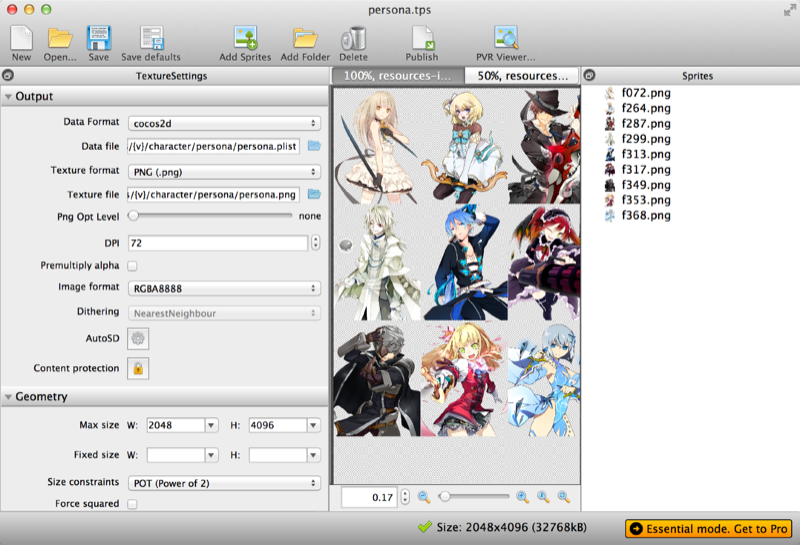


#SHOEBOX TEXTUREPACKER WINDOWS#
It allows you to drag files and folders from Windows Explorer and explicit images to your projects. This tool provides many key features, including console tools, split sheet tool, images optimization, sprites rotation, detection of identical sprites, multi textures packing, sprites trimming, and many more.Ĭyotek Spriter is a popular tool that creates sprite sheets and dynamic text effects for games, HTML, tool strips, HTML, and many more. It also has the ability to split files by which you can adjust the height and width of any specific sprite unit. This tool has an intuitive interface by which you can adjust and customize all images as per your desire.įree Texture Packer offers you to start with texture format and name and remove the file extension according to your requirement. It offers you to use it as a grunt plugin or gulp module to enjoy more development options related to console gaming. You can quickly export your creations in various formats such as XML, JSON, and CSS or as files compatible with Spine, Starling, and Unreal Engine. It is compatible with multiple operating systems, including Windows, macOS, Linux, and Web. png's manually.Free Texture Packer is a dynamic and open-source tool that offers you to pack multiple images into one atlas for your sites or games. However, pixi-tilemap didn't apply to my usecase as I'm primitive in terms of sprites, using. I'm already using pixi-display, a game changer I really like gameofbombs, just played again :), I checked it first after seeing how horrible font rendering was in my game, yet in game of bombs the text usage seemed very polished, I guess the background really helpsĪnyway, do you think these issues could ever be solved from the PIXI side? I think I might implement a pre-deployment routine at one point, that will turn the map into one image, that would solve the problem once and for all - and maybe a similar routine that will space out sprites manually tooīut at the time, during development, I guess patching and deferring the issue is the way to go (Although I check the type/CONST and verify the WebGL/Canvas usage, it's almost unbelievable how the two pictures are exactly the same in both Renderers, it's admirable how consistent PIXI is) Up to this point, I didn't really think about WebGL/Canvas, PIXI was an isolating layer as it was supposed to be (and it is : ), now I implemented a routine to see what I was using, it was WebGL, tried Canvas too roughly, luckily my manually patched dynamics works the same on Canvas too - so switching to Canvas didn't change things as I was afraid they might

Obviously this is not applicable for the map, the map itself needs to have integer coordinates, as tiles need to be exact, however, the monsters on the map can have float coordinates if I shrink them by 1px from the edges (These are when I test these properties individually, one by one, the above pictures are the comparison for your suggestion)ĭirty solution: Use float + manually shrink sprites by 1px, so if sprites overflow by 1px, they render what they should have rendered in the first place Int/float: using float triggers the issue from frame to frame even with NEAREST LINEAR/NEAREST - There's something definitely wrong if I use LINEAR, the problem I described tenfolds My experience, antialias: true/false makes no visible or observable difference, I even suspect it's always on, I check the drawn stuff with a loupe and can't detect any changeĢx entities / 2x map / 2x stage(?), doesn't make a difference, no matter where the scale comes from, they are rendered the same, same issues Here is antialias, 2x scaled map, LINEAR, antialias: true, float Here is no antialias, 2x scaled map, NEAREST, antialias: false, int


 0 kommentar(er)
0 kommentar(er)
